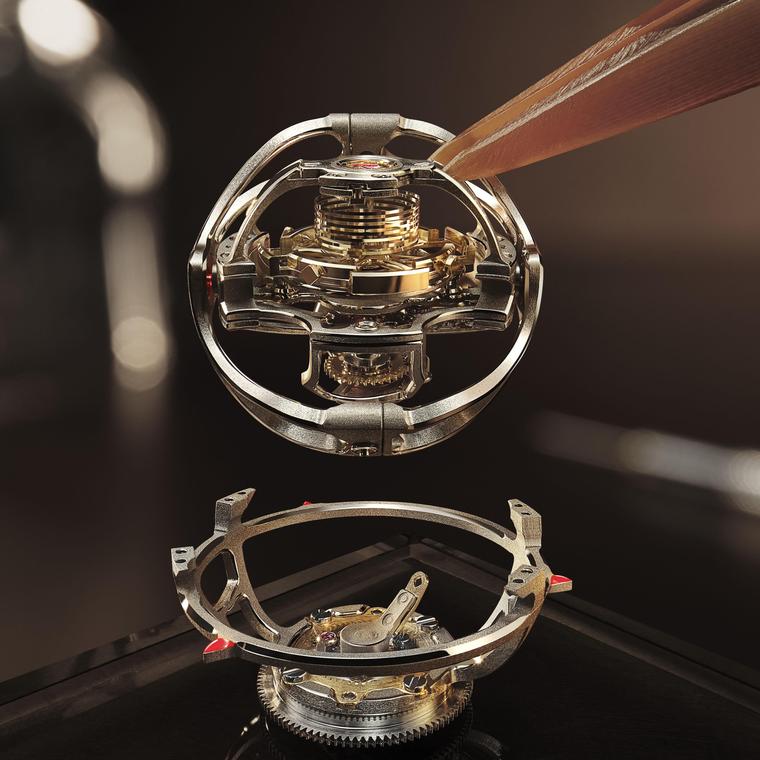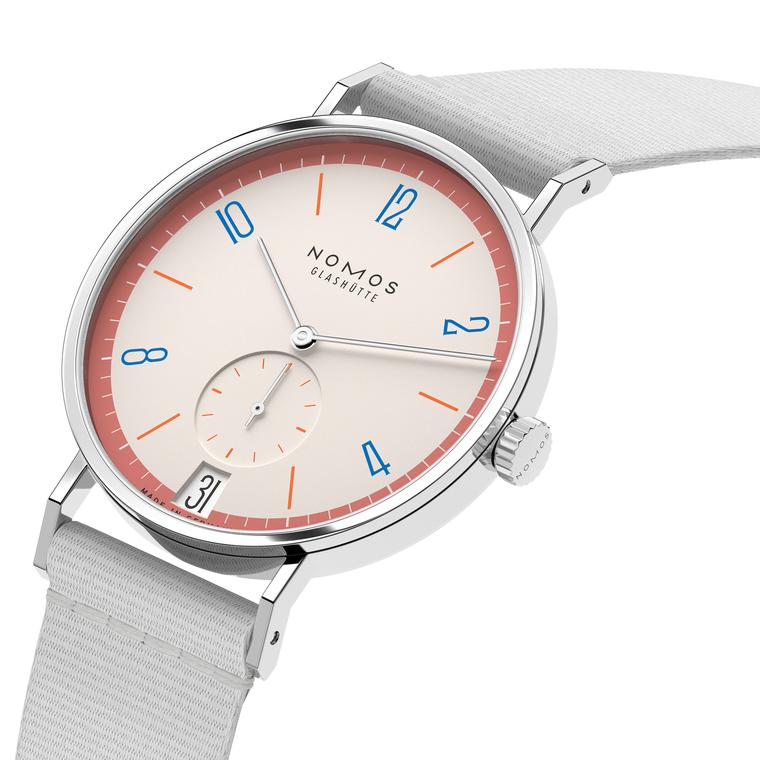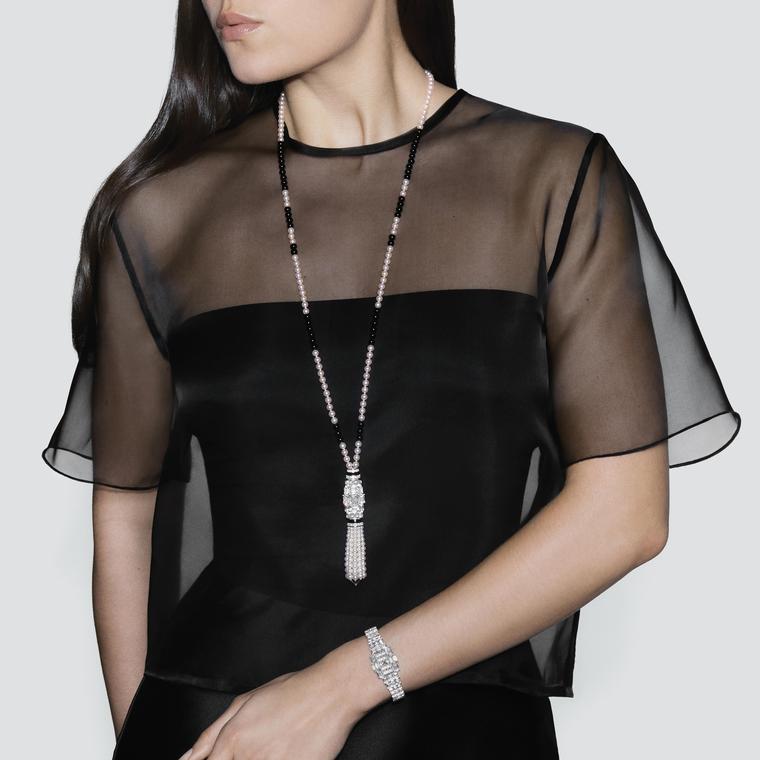Complicated watches are having a comeback. Mega mechanics seem to be on the menu again, with quite a few brands at Watches and Wonders debuting mind-bogglingly complex creations that would have been unimaginable a few years ago. For a while, we seemed to have been in a vintage resissue echo chamber. No bad thing, retro designs have universal appeal mostly because they look so aesthetically appealing. However, it has felt that, in most corners, creativity has taken a back seat. Not so for 2024. Crazy complicated timepieces are back. Here’s five of the best.
Jaeger-LeCoultre Duometre Heliotourbillon Perpetual
This year was all about the Duometre for Jaeger-LeCoultre. First launched in 2007 and inspired by a pocket watch with two barrels from its back catalogue, the Duometre was a clever bit of engineering. As well as two barrels, it had two separate gear trains coming off those barrels, which were connected to a single regulating organ. This allowed the time-keeping functions to run off one barrel and gear train and any complications could run off the other. This meant the complication didn’t drain power from the time-keeping part of the movement, which improves accuracy. For 2024, Jaeger-LeCoultre has decided to use the second gear train to power its most ambitious tourbillon to date – the heliotourbillon. In a step up from 2004’s dual-axis Gyrotourbillon, this gravity-defying (literally) piece of mechanics moves on three axes. The first cage is at 90º to the balance wheel which it encircles; the second at 90º to the first one. Both of these rotate every 30 seconds. The third cage is parallel to the first and rotates fully once every minute. This incredible mechanical ball turns against a dark blue background, like a spinning celestial orb in a star-filled sky. Being a perpetual calendar, this watch also has a moonphase and day dial, another for the grand date with leap year indication and month. It also has the time (naturally) and two power reserve indicators – one for each barrel. Despite everything that’s going on, because the dial has a symmetry along the horizontal axis, it has a relatively uncluttered elegance to it.
IWC Portugieser Eternal Calendar
None of us will be around when this particular perpetual calendar needs adjusting so we’ll just have to take IWC’s word for it. This watch is accurate to 45 million years. And no that isn’t a typo. Thanks to the introduction of a new 400-year gear that makes one rotation every 400 years and, due to its three indentations, it makes sure the calendar skips the three leap years over that period. This mechanical detail also admits IWC into the “secular perpetual calendar” club. This rare form of perpetual calendar, which is so advanced it can account for exceptional non-leap years, such as 2100, 2200 etc, is made only by the likes of Patek Philippe, which made one in pocket watch form for its 150th anniversary in 1989, Sven Andersen, and Franck Muller, due to the complexity of its gearing. And that’s not the only complex gearing going on in this exceptional watch. To cope with the 45m-year non-adjustment span, IWC had to place a new three-wheel reduction gear train in between the base movement and the moonphase disc so that its double moonphase, which shows the moon in both hemispheres, will only deviate by one day in 45m years. Again, we’ll just have to take IWC’s word for it.
Vacheron Constantin Les Cabinotiers Berkley Grand Complication
Made for billionaire and insurance tycoon William Robert Berkley this is now the most complicated watch in the world with 63 “complications” (the quotation marks are there because brands like to count basic timekeeping functions as complications, which they evidently are not). However, it does have few complexities that really are worth remarking upon. Forget triple-axis tourbillons, world times and something as pedestrian as a chronograph (all of which it has, by the way), this watch goes the extra horological mile. First is the Chinese perpetual calendar, which is included alongside the usual Gregorian one. Gregorian calendars are solar, Chinese perpetual calendars are lunar (there is an 11-day discrepancy between the two years), with each month beginning on the day of the new moon. In this case, that new moon is the one on the 120th meridian east that passes through the Shangdong peninsula and Hangzhou, the capital city of China’s Zhejiang province near the coast of the East China Sea. It also has an agricultural perpetual calendar with indications for the seasons, equinoxes, and solstices. There is a sky chart on the astronomical calendar as well as sunrise and sunset indications, and day and night lengths, all calibrated to Shanghai. And if that wasn’t enough, it can chime the Westminster carillon too.
Piaget Altiplano Ultimate Concept Tourbillon 150th anniversary
Piaget was always going to do something a bit special with its Altiplano for its 150th anniversary, but this is next level even for them. In just two millimetres of case, it has managed to squeeze in a flying tourbillon. Ninety percent of the movement has been reimagined because Piaget didn’t want to simply “spread” the movement in order to keep the thinness. The shape of the balance wheel has had to be reworked, and 10 extra components added in comparison to a regular tourbillon. To place a flying tourbillon into a case this slim, the bridges that are usually over or under the tourbillon cage had to be removed meaning that here the tourbillon is held in place by its sides. Then there was the issue of frailty that comes with a case this slim and the risk of any hand finishing bending the incredibly delicate components. In the end, the team simulated around 70 different concepts before settling on the one that would be brought to life. In a Piaget first, it has an open aperture on the case back so you can see the flying tourbillon in all its glory. Given the work that’s gone into making this concept a reality, being able to actually see it is, surely, a well-earned prerogative.
Roger Dubuis Excalibur Sunrise Double Tourbillon
It has put four balances on a watch and rendered in three dimensions King Arthur and his fabled knights on a dial and now it has decided to double up on its tourbillons. Flying ones to be exact. The real skill with this watch – aside from the multi-layered skeleton dial, the 108 specifically chosen red garnets, orange spessartites, and yellow sapphires that are gradated to resembles a sunrise, and the 17 different hand finishing techniques that earned it the Poinçon de Genève seal – is the regulating differential. This clever link between the two tourbillons twins them so that the faster tourbillon is able to transmit more energy into the watch’s power source to balance the energy supply of the slower one so the power going into the watch is an average of the two. It’s a remarkable feat of engineering but nothing out of the ordinary for Roger Dubuis.






















